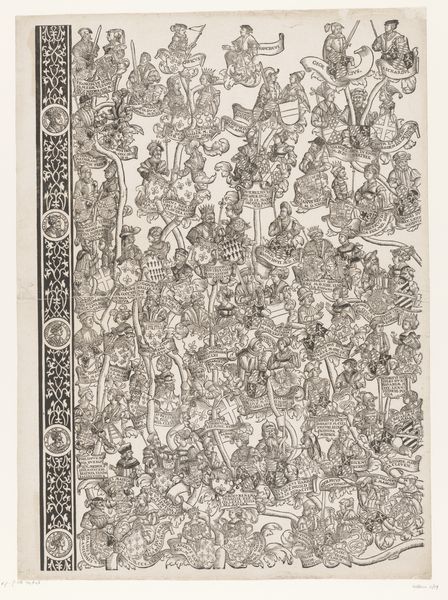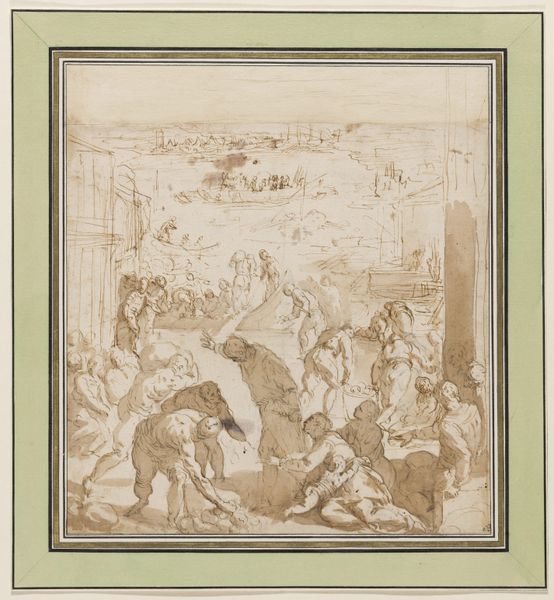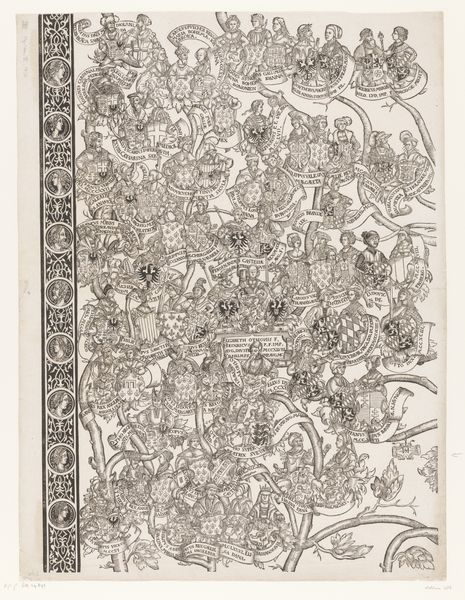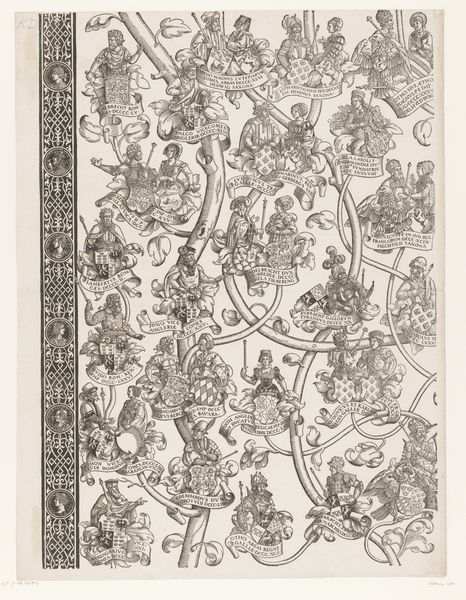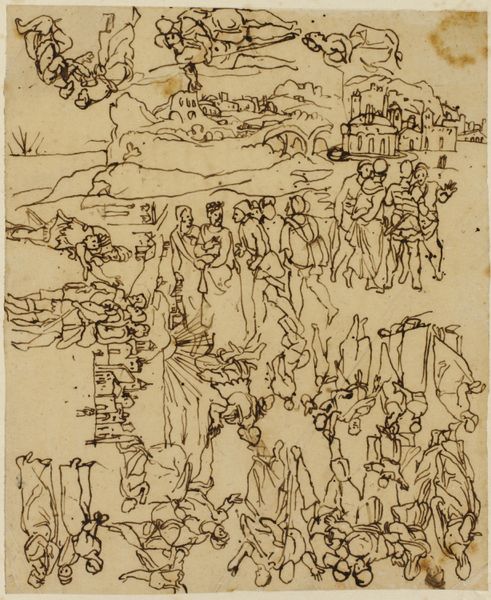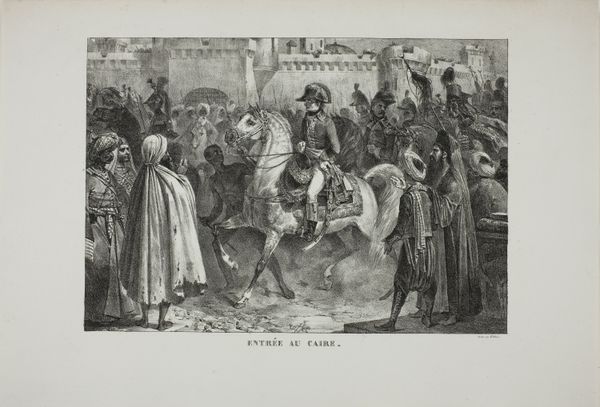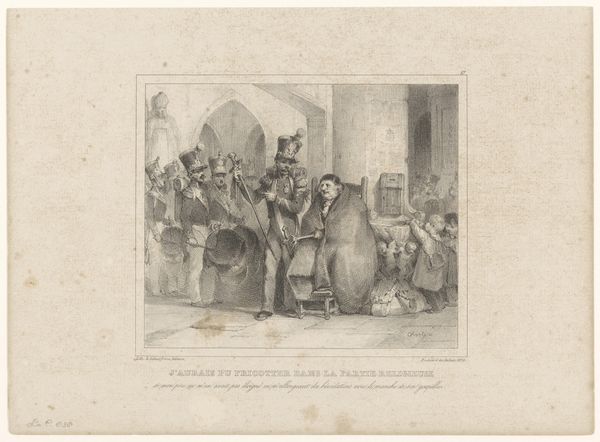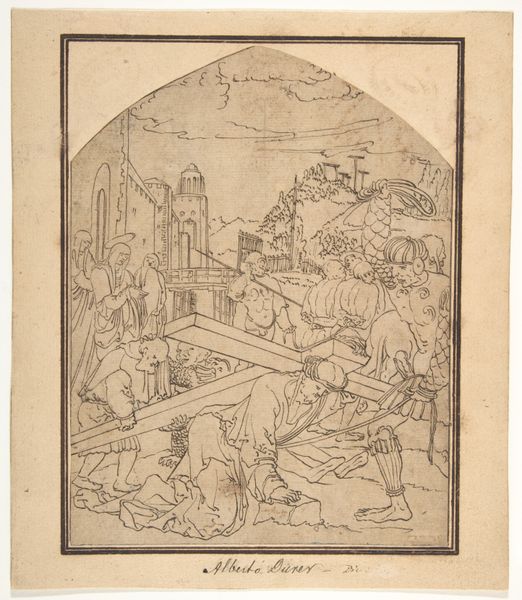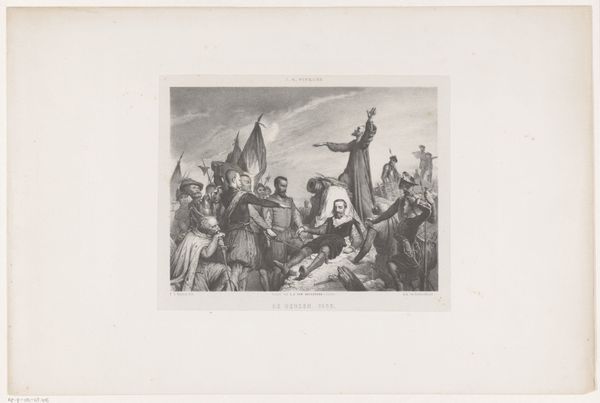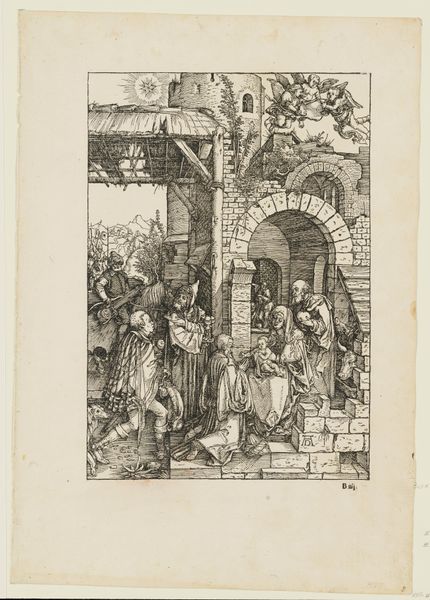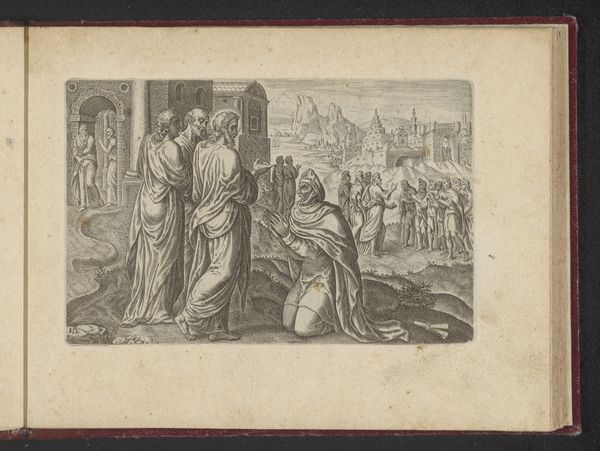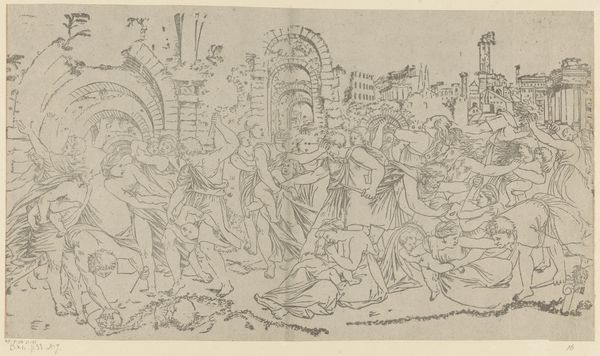
"The Besotted Iranian Camp Attacked by Night", Folio 241r from the Shahnama (Book of Kings) of Shah Tahmasp 1500 - 1555
0:00
0:00
painting, watercolor
#
water colours
#
painting
#
landscape
#
figuration
#
watercolor
#
horse
#
men
#
islamic-art
#
history-painting
#
miniature
#
watercolor
Dimensions: Painting: H. 11 1/8 in. (28.2 cm) W. 9 1/8 in. (23.2 cm) Entire Page: H. 18 11/16 in. (47.5 cm) W. 12 5/8 in. (32.1 cm)
Copyright: Public Domain
Curator: Here we have "The Besotted Iranian Camp Attacked by Night," a watercolor painting dating from 1500 to 1555. It is folio 241r from the Shahnama, or Book of Kings, of Shah Tahmasp. Editor: My initial impression is that it's incredibly vibrant. The density of figures and colors creates a sense of chaotic energy. A feeling of overwhelming movement emanates from it. Curator: Indeed. If we consider the physical creation of this piece, it speaks to a significant investment of labor and resources. Watercolors like this, often quite small, demanded meticulous brushwork and likely a whole team of artists to prepare the materials, grind pigments, and execute the painting according to a master's design. It was almost industrial! Editor: Precisely, and it’s a controlled chaos, though, if you examine it closely. The placement of each figure, the careful layering of colors—look at the intricate patterns on the tents! There's a visual rhythm, even in the violence. Curator: Right! This also tells us a lot about patronage and courtly life. This elaborate "Book of Kings" served to legitimize and glorify the Shah. The very act of creating it was political. Also, the use of horses reminds me about consumption since horse equipment in this period often represented very high-value commodity chains of production from diverse origins. Editor: I would agree. Moreover, the composition uses hierarchical scale, a key formal element. The more important figures are larger and more centrally located, while the chaos is carefully framed. Curator: Let's not forget the material conditions of warfare at the time! The stakes of gaining power! Those textiles in the tents were not only decorative, they signaled wealth, access, and control over trade routes. Editor: Good point. And that intricate border with the text? It is integrated to the picture field. It provides both structure and ornamentation, almost breathing with the main image. It merges abstract forms with recognizable figures and calligraphy. Curator: This piece is definitely an opulent statement, isn't it? Thinking of how the materials themselves underscore narratives of power. Editor: A very intriguing fusion, one I appreciate even more having considered both formal aspects and the labor behind the work.
Comments
No comments
Be the first to comment and join the conversation on the ultimate creative platform.


